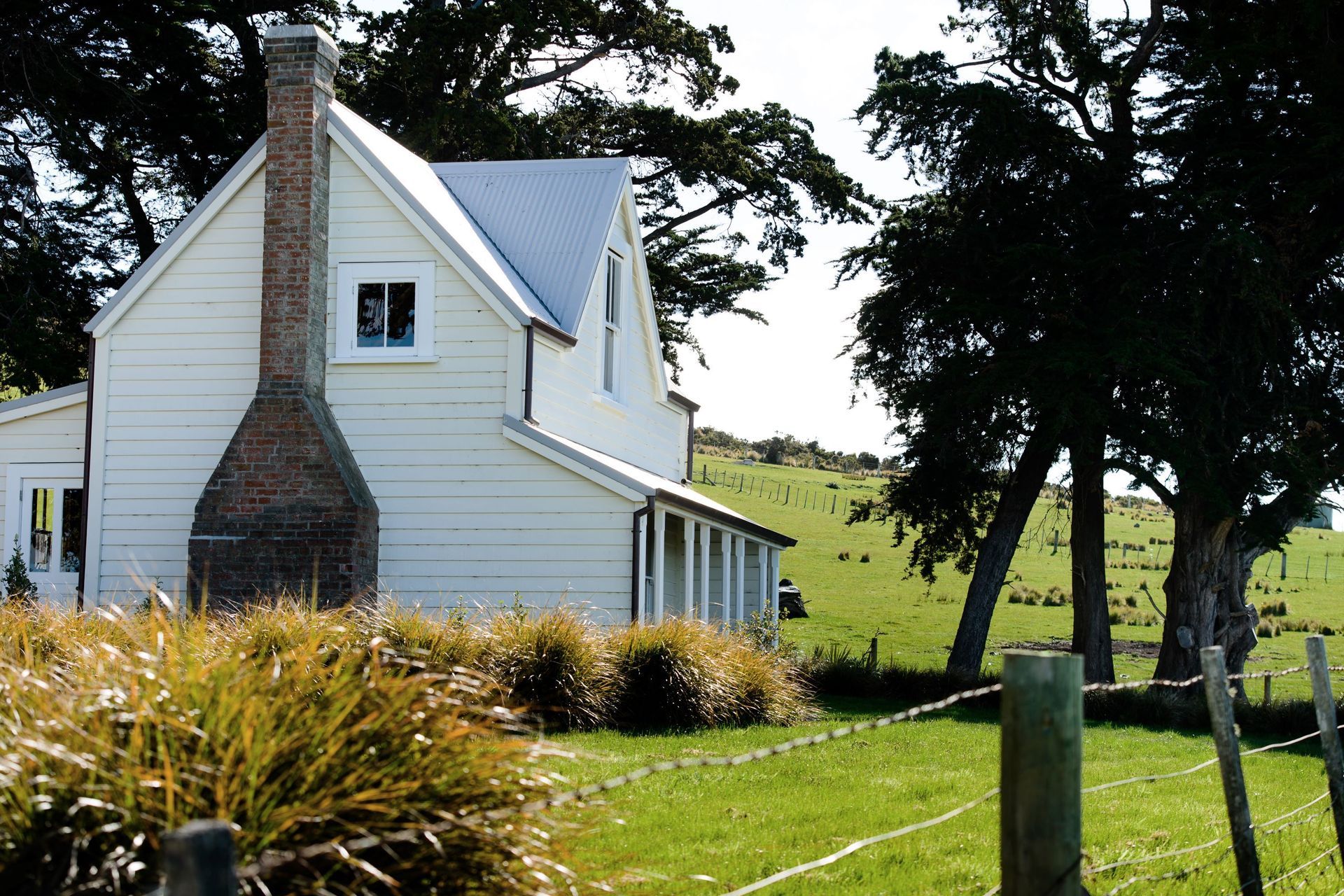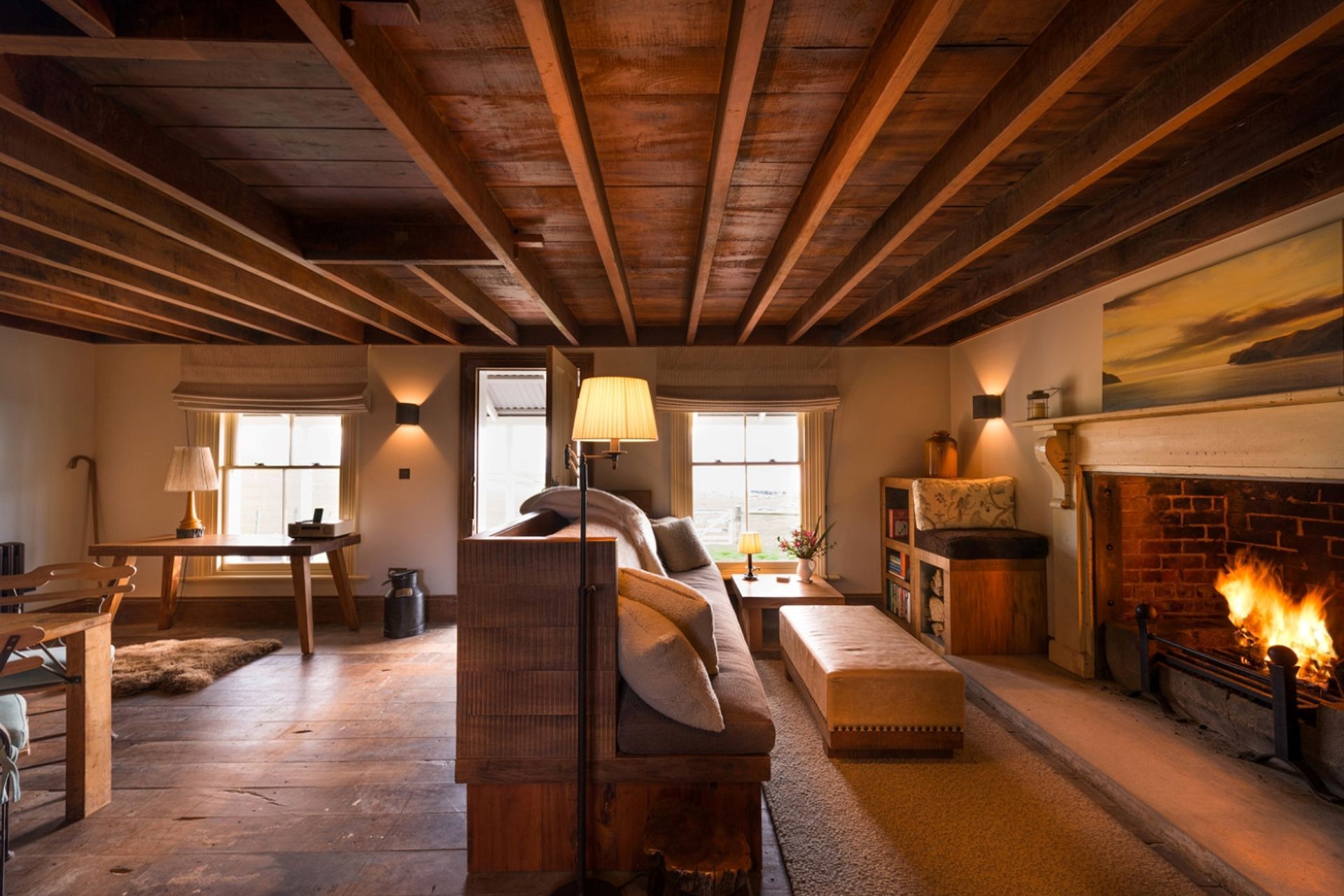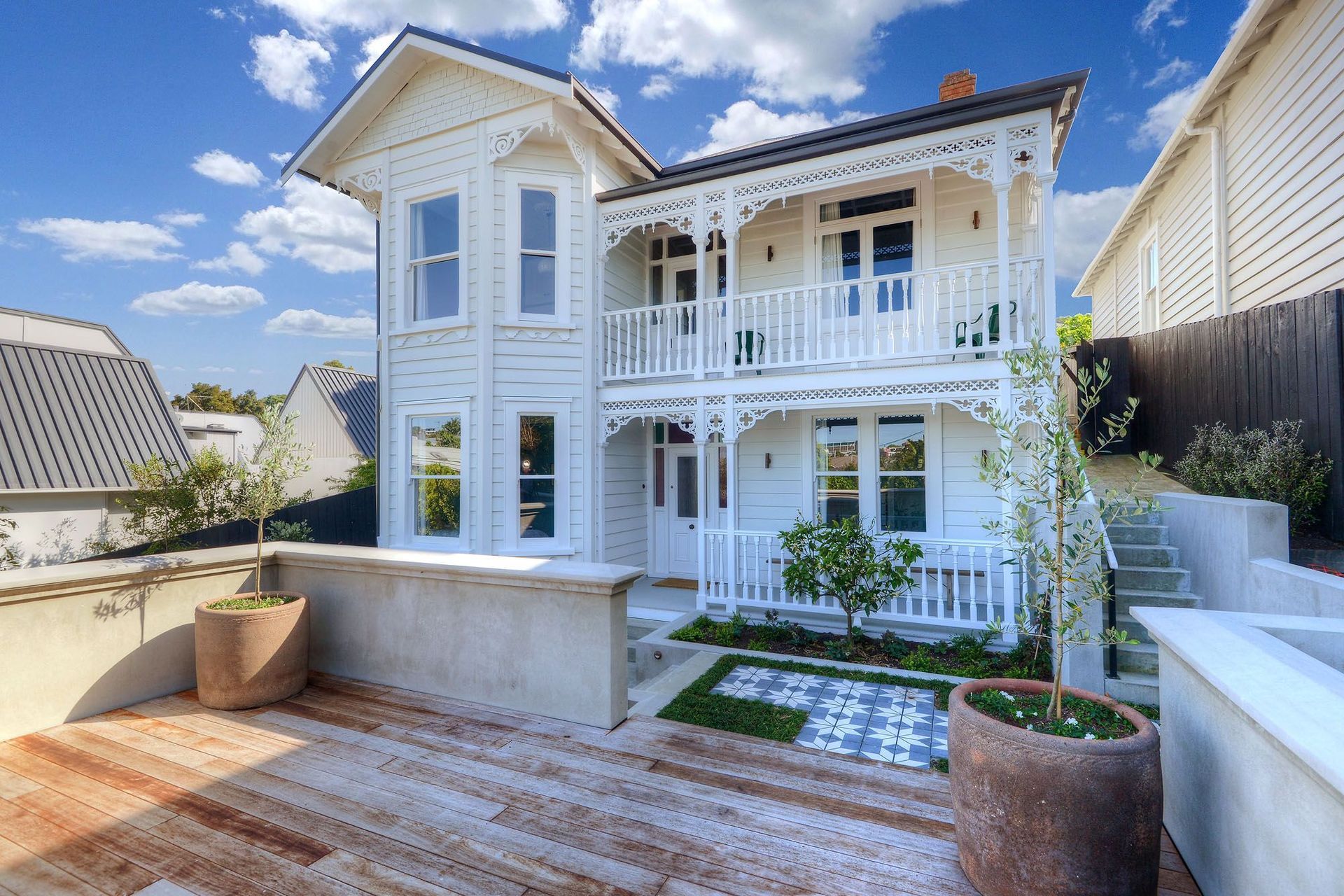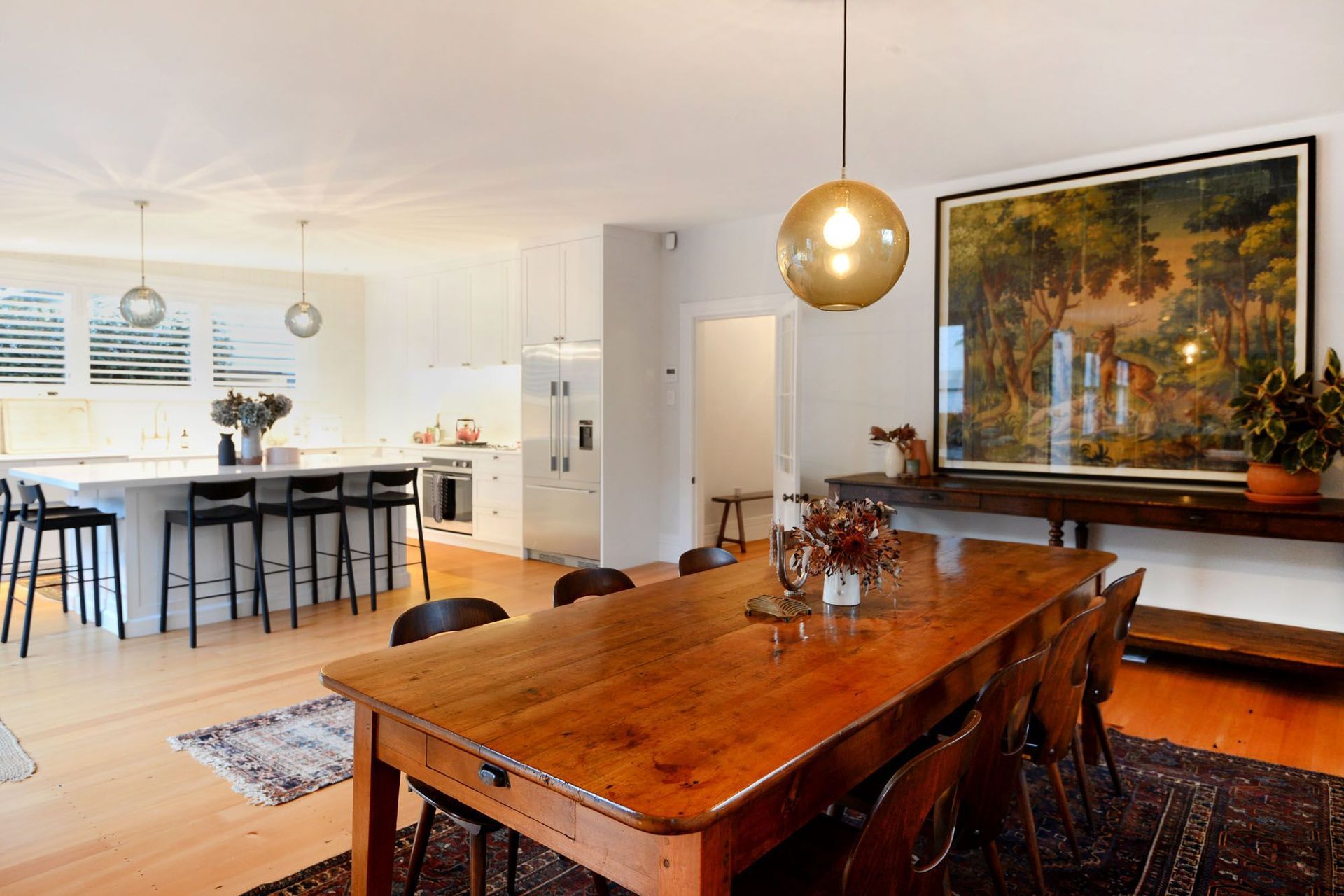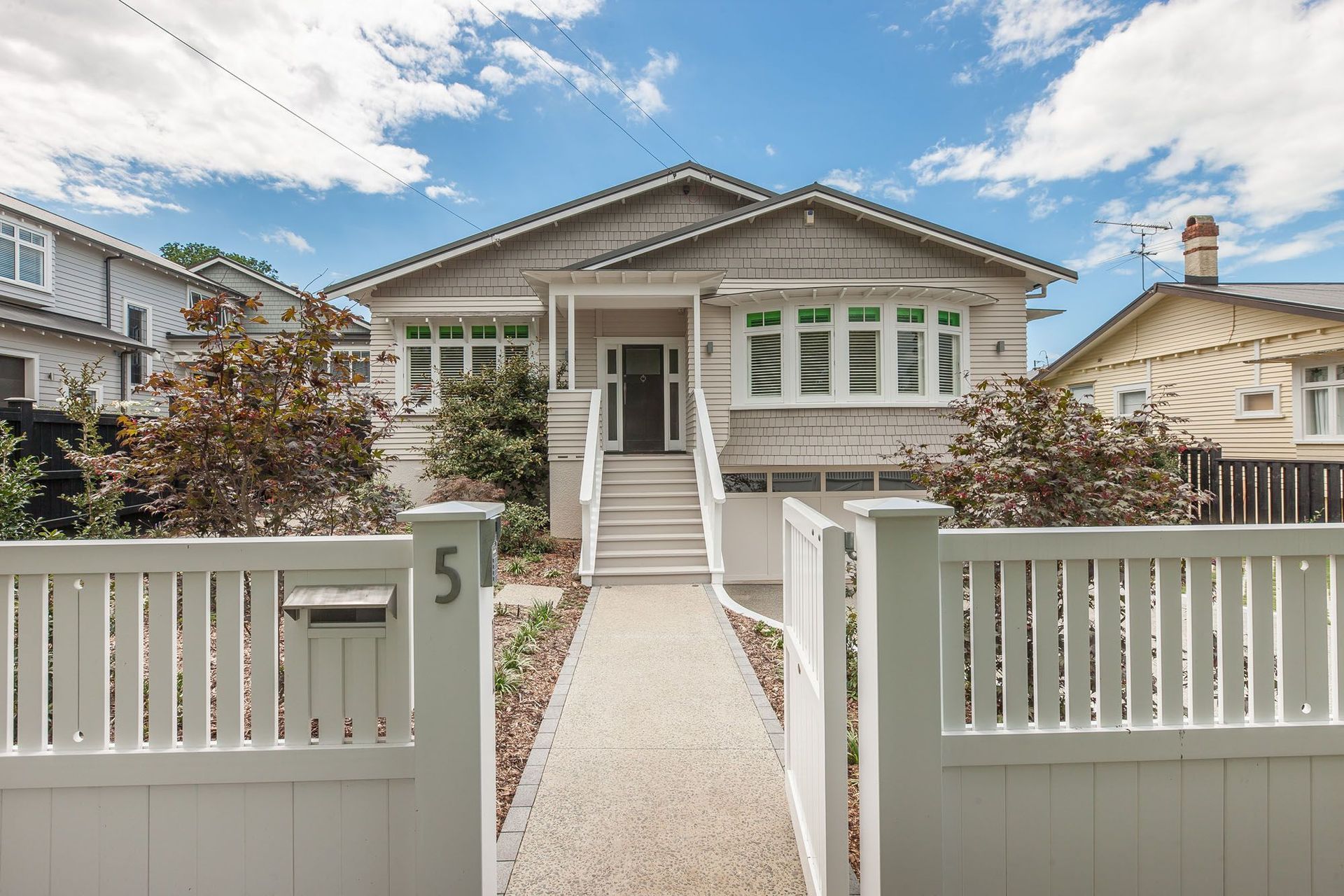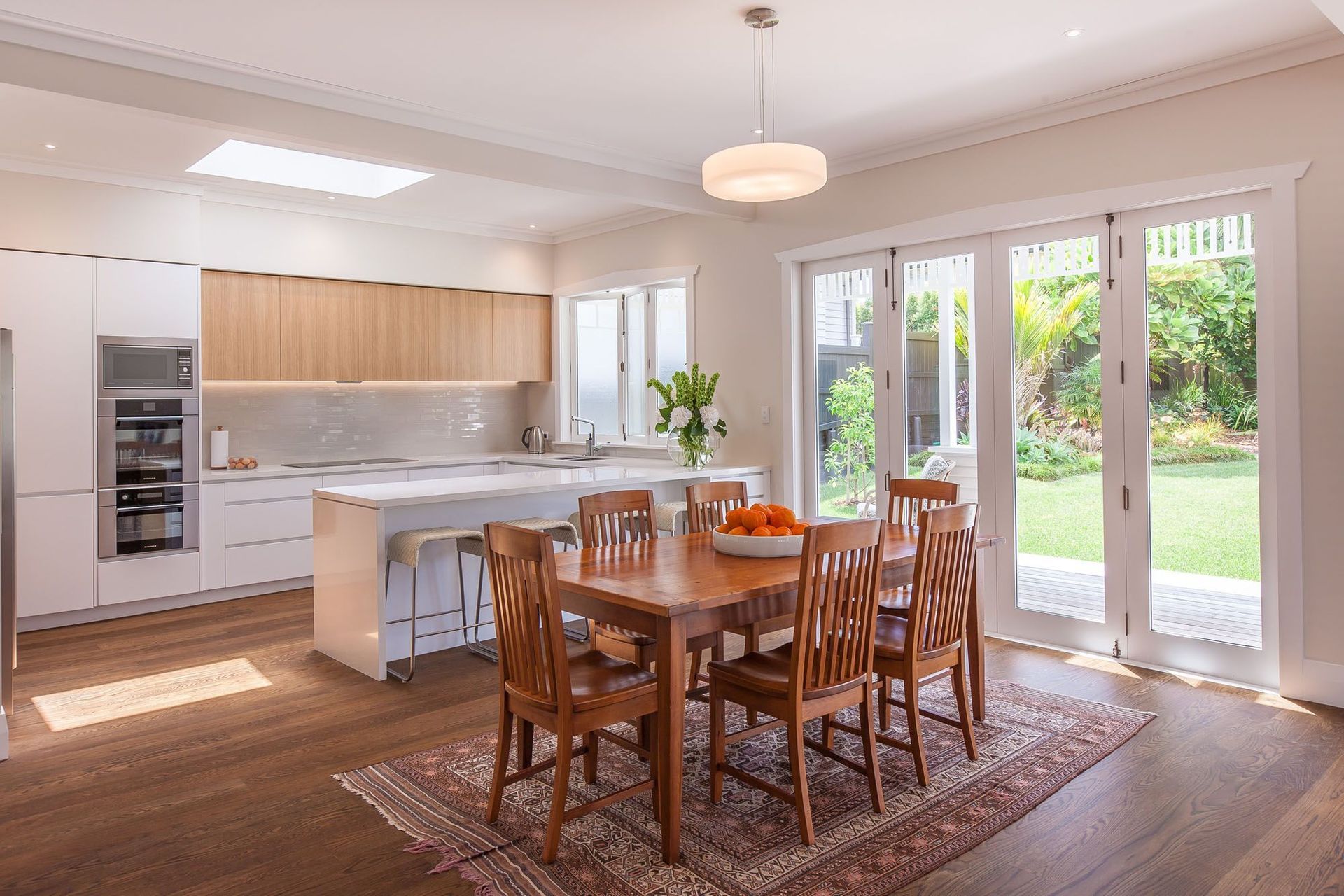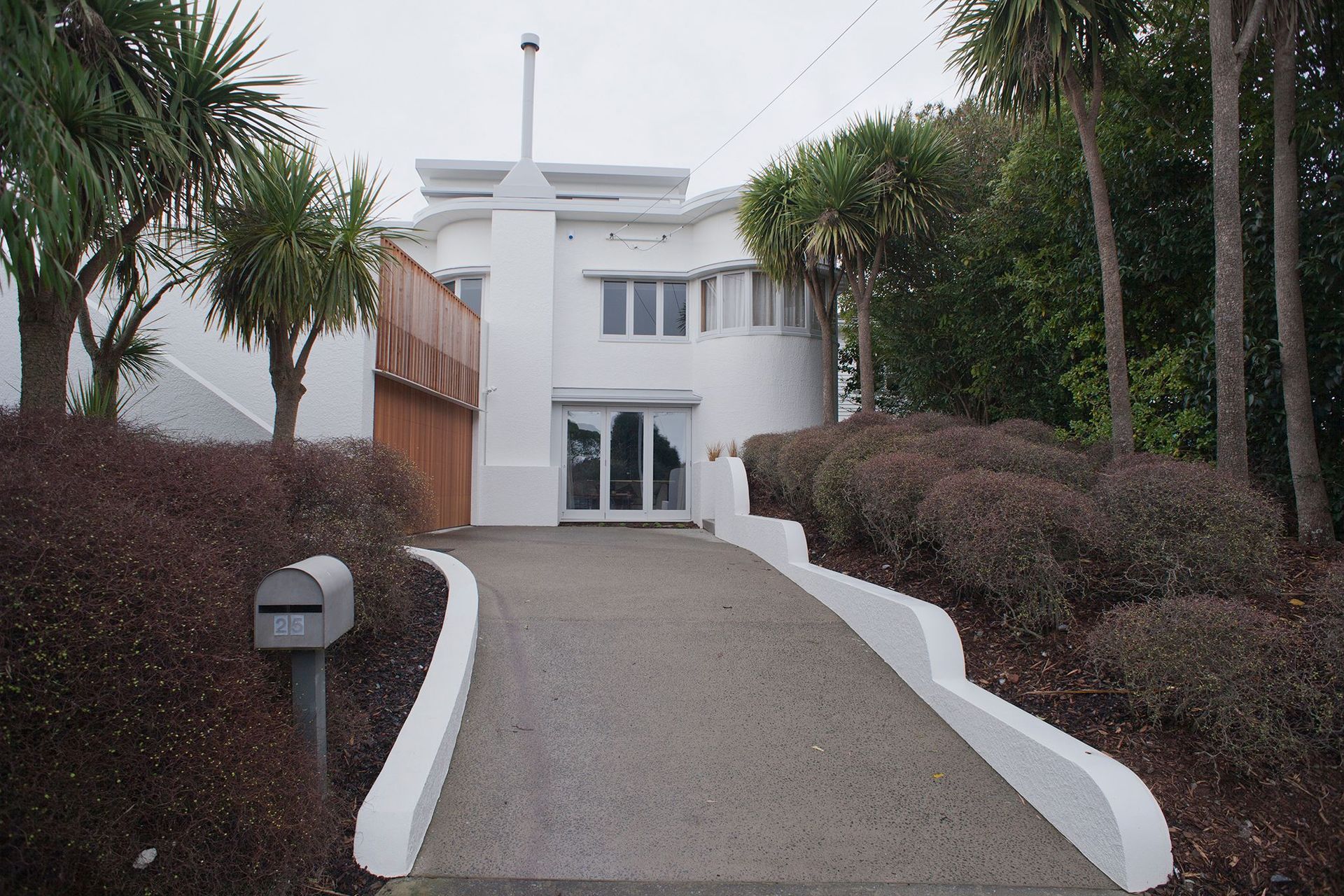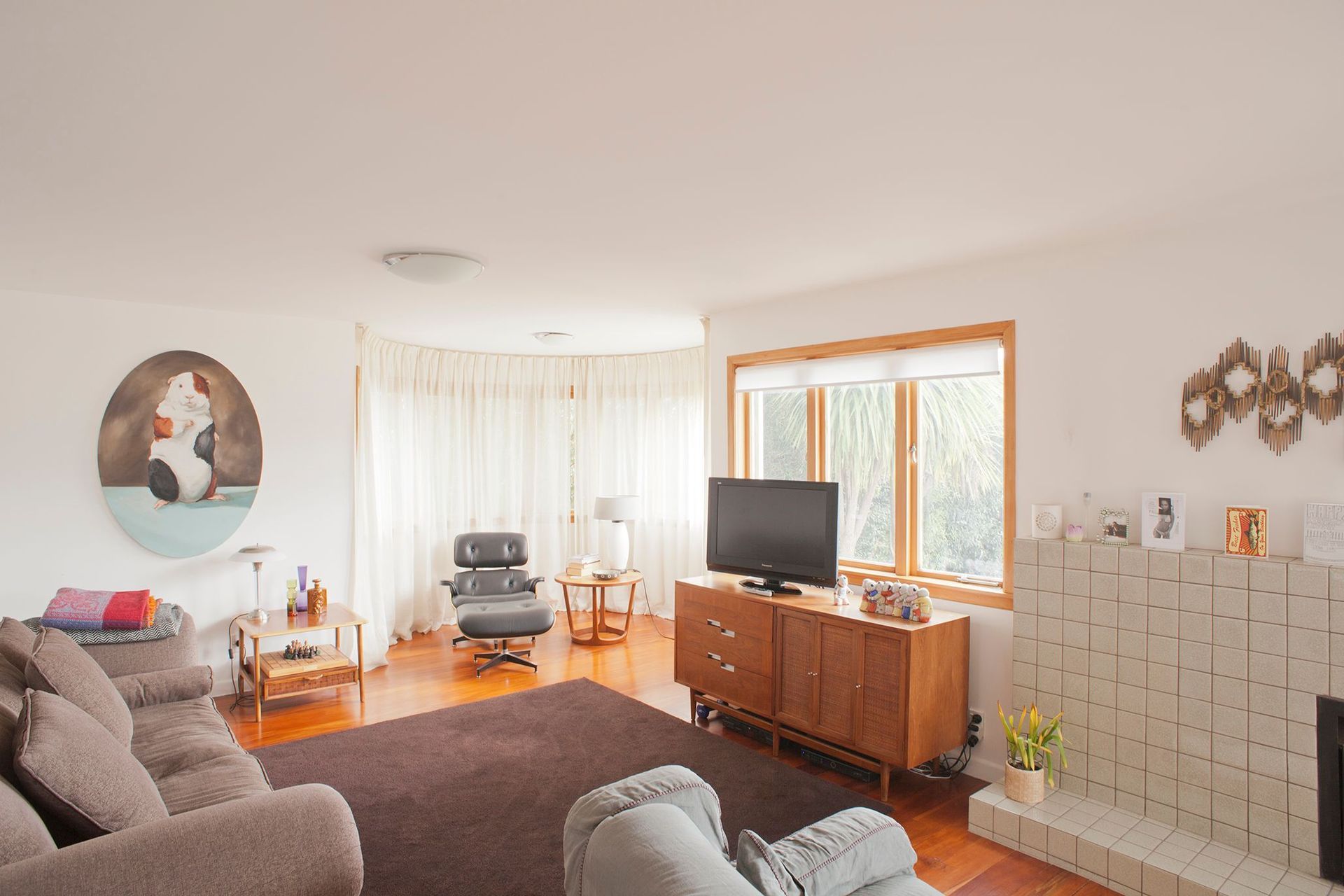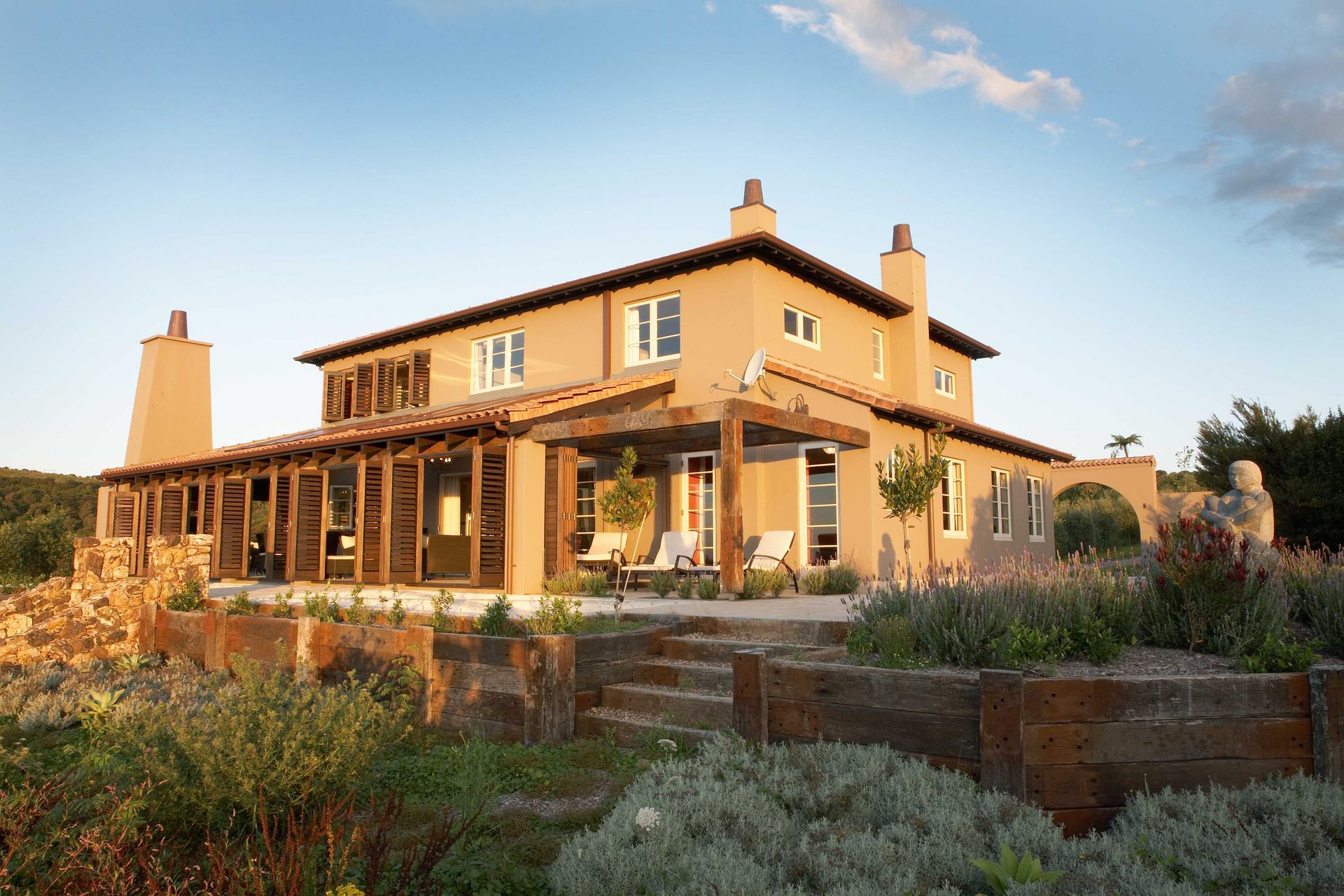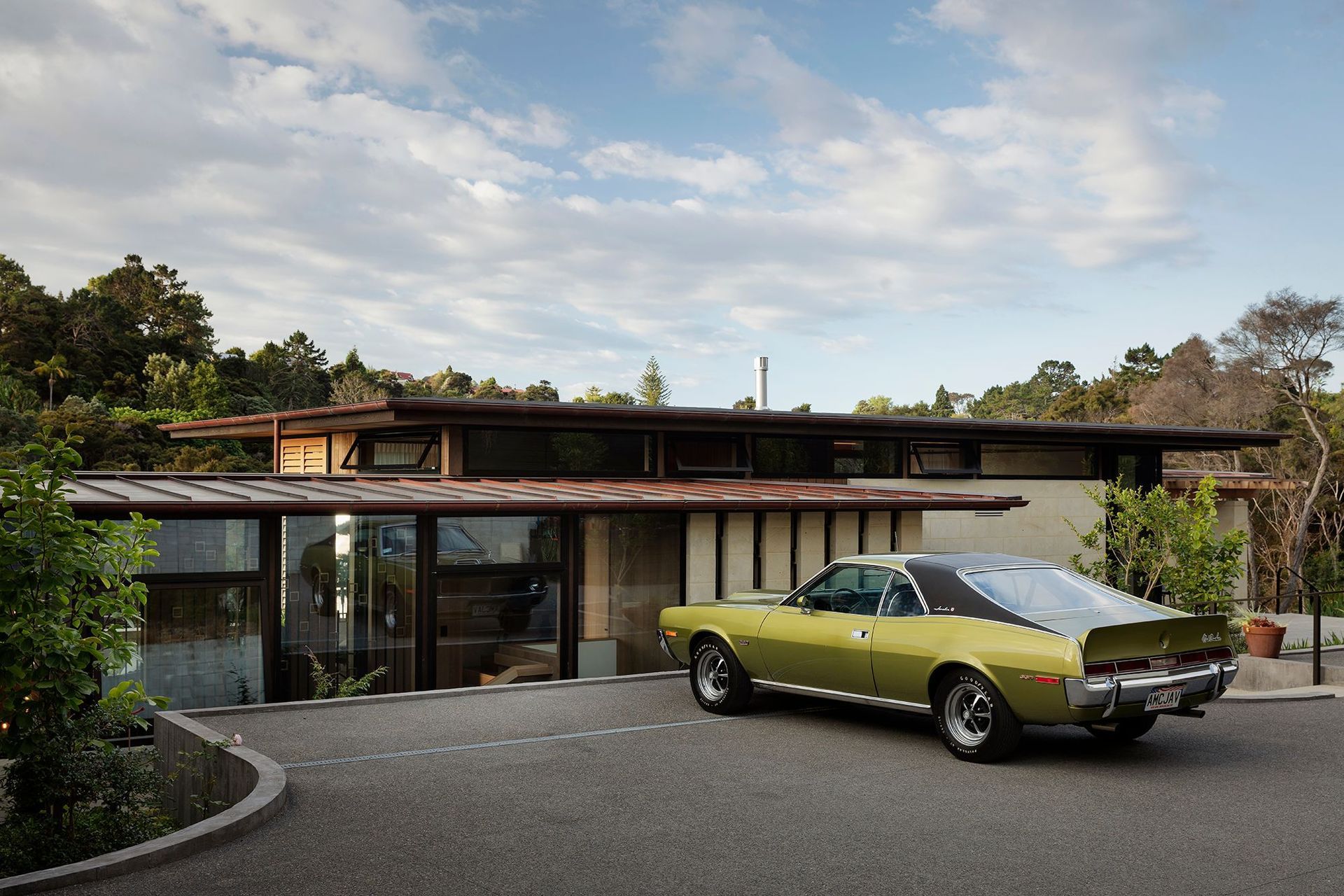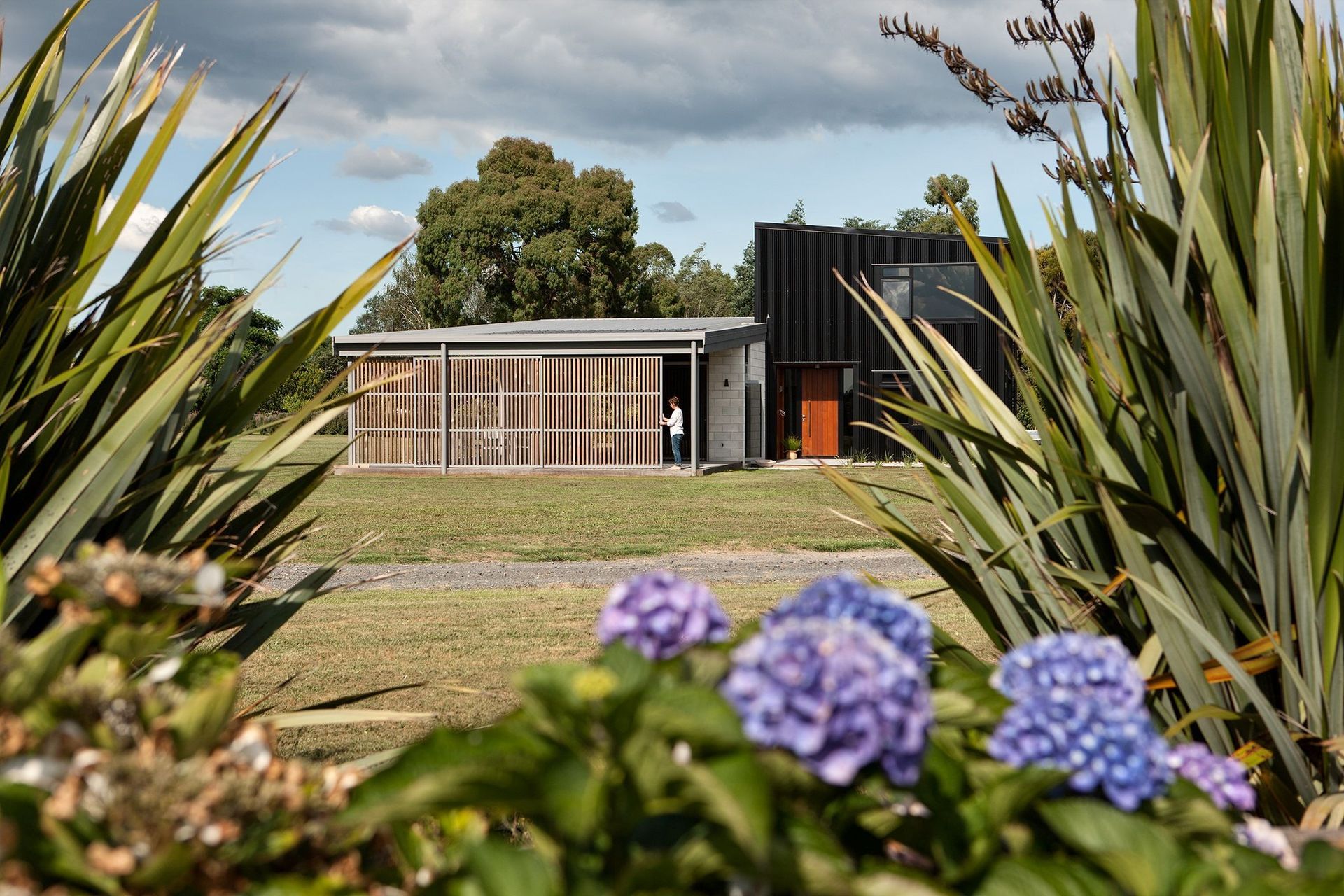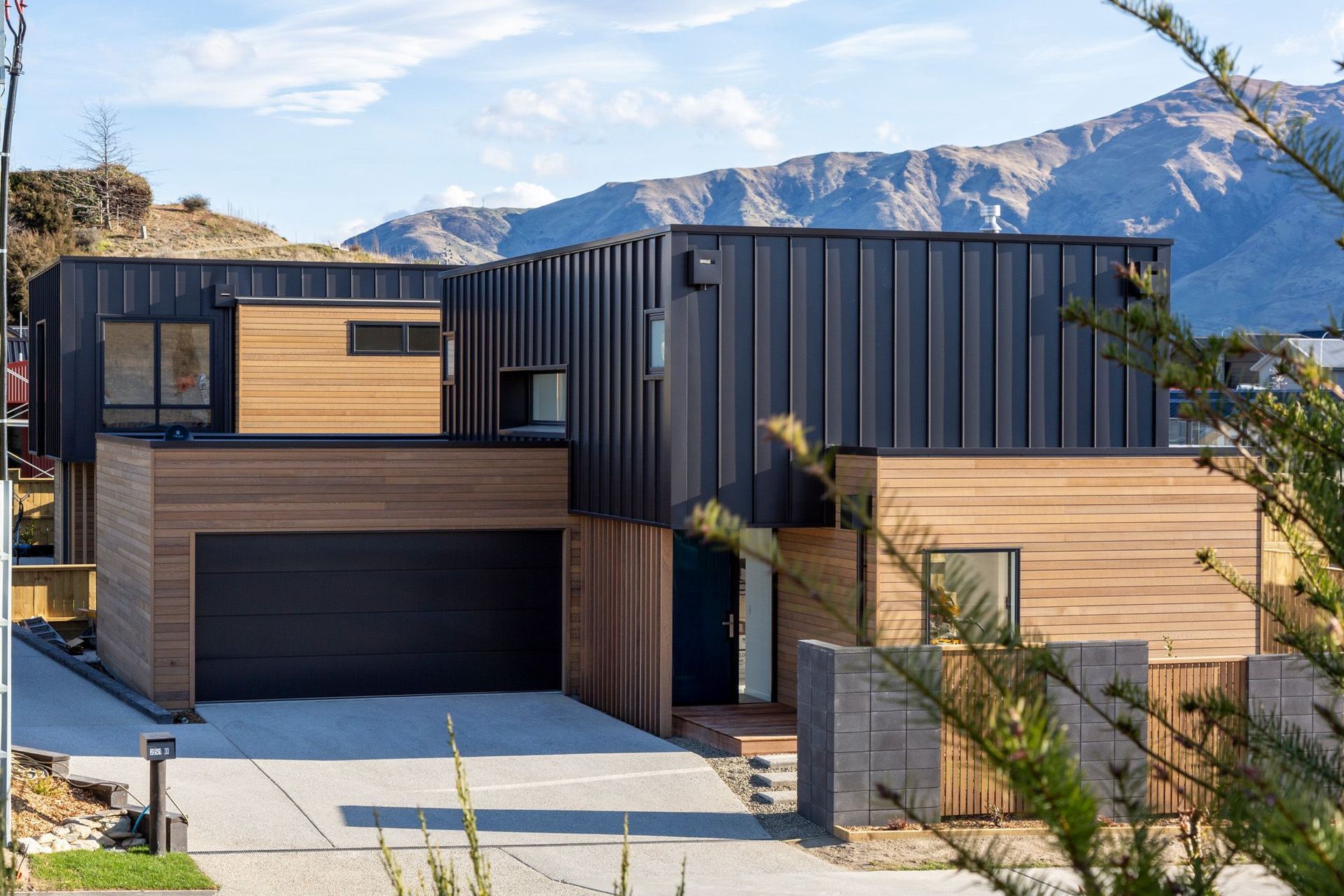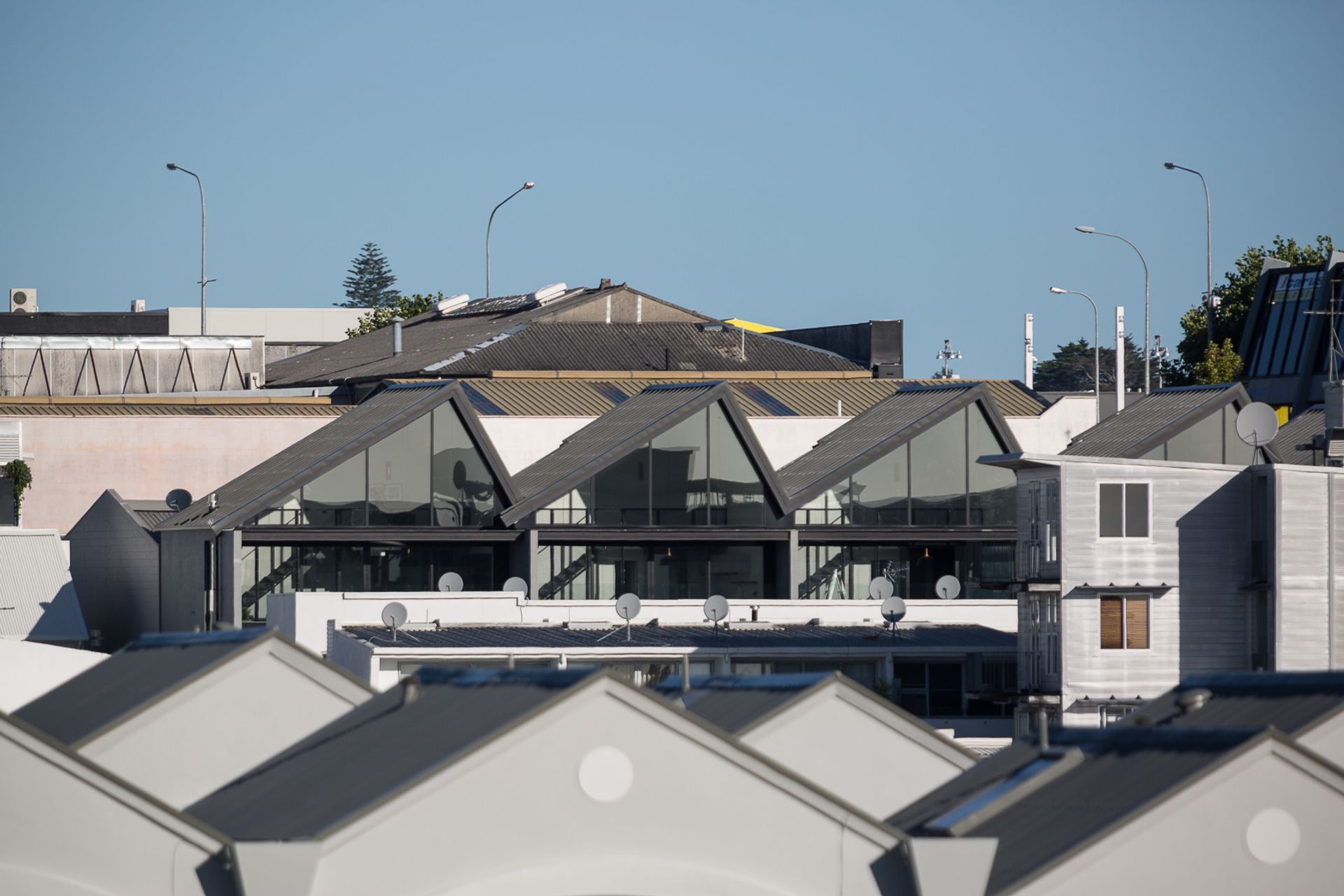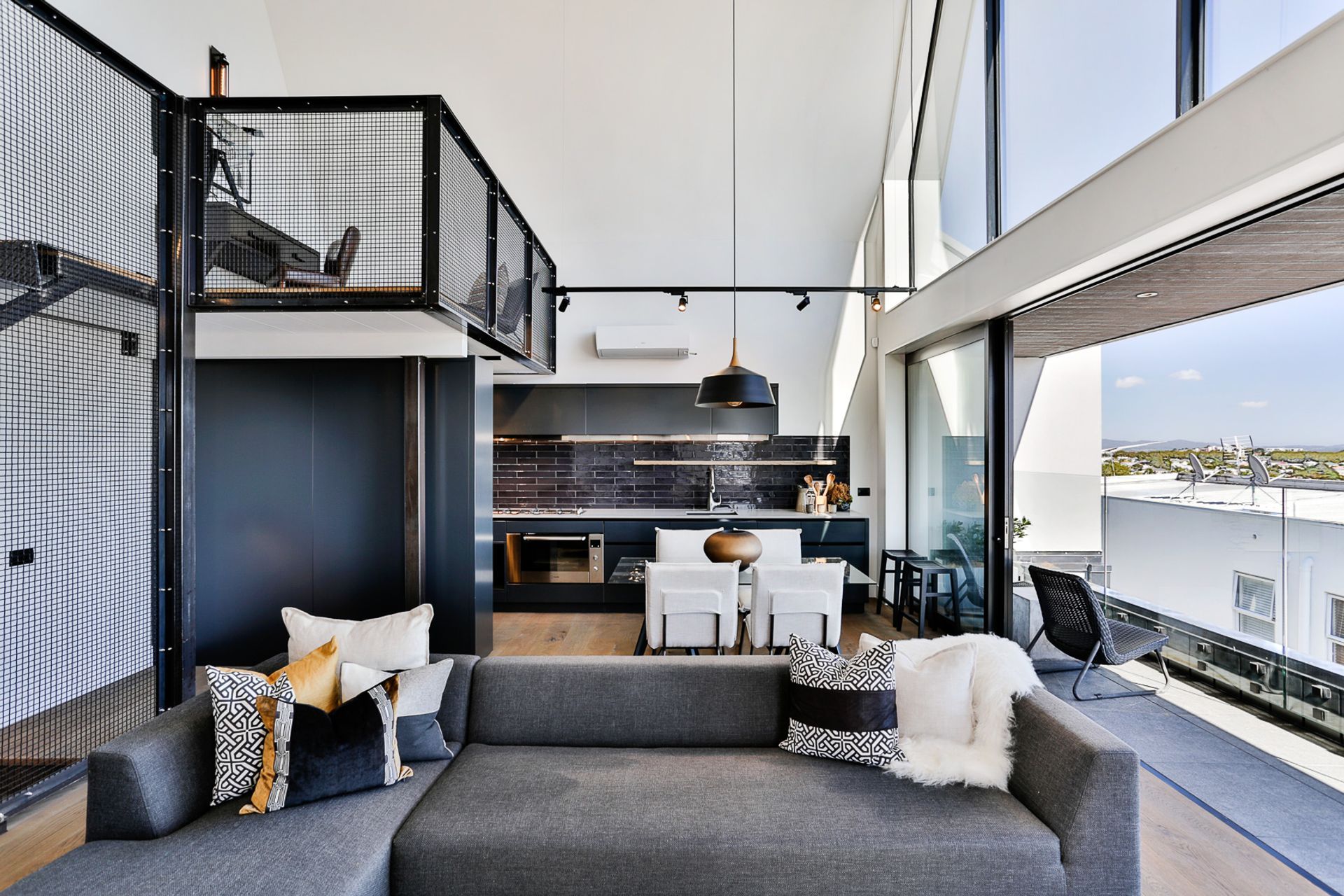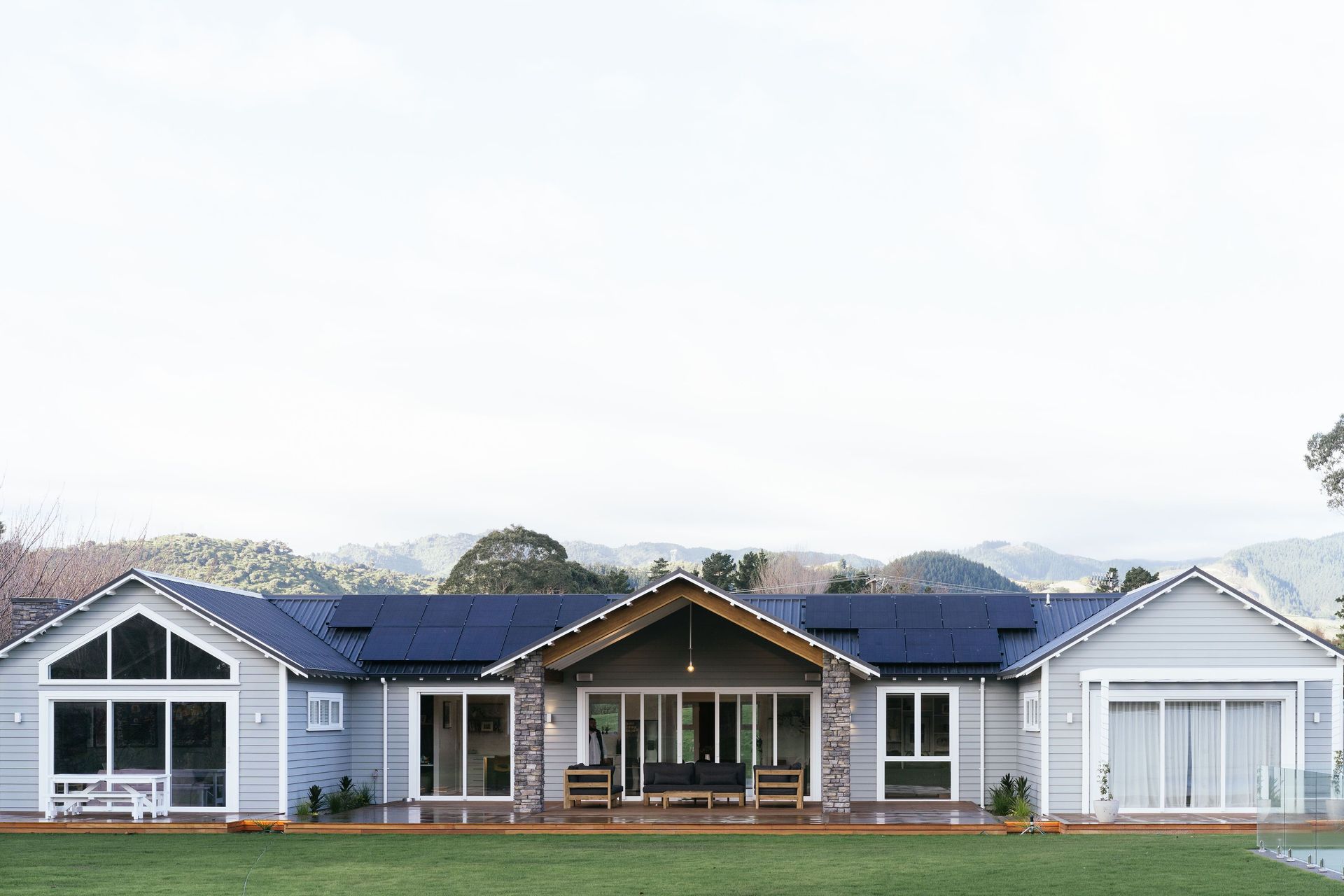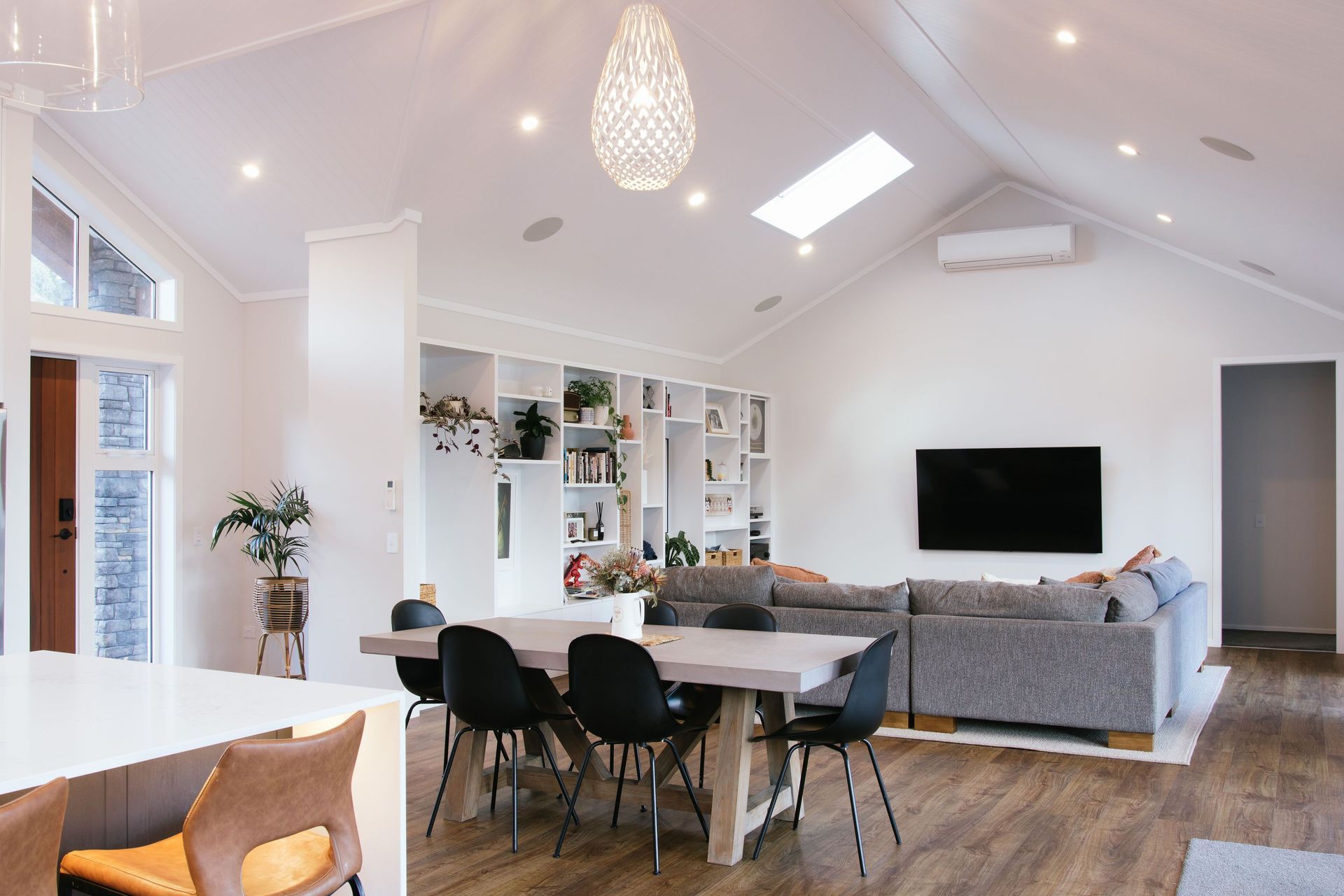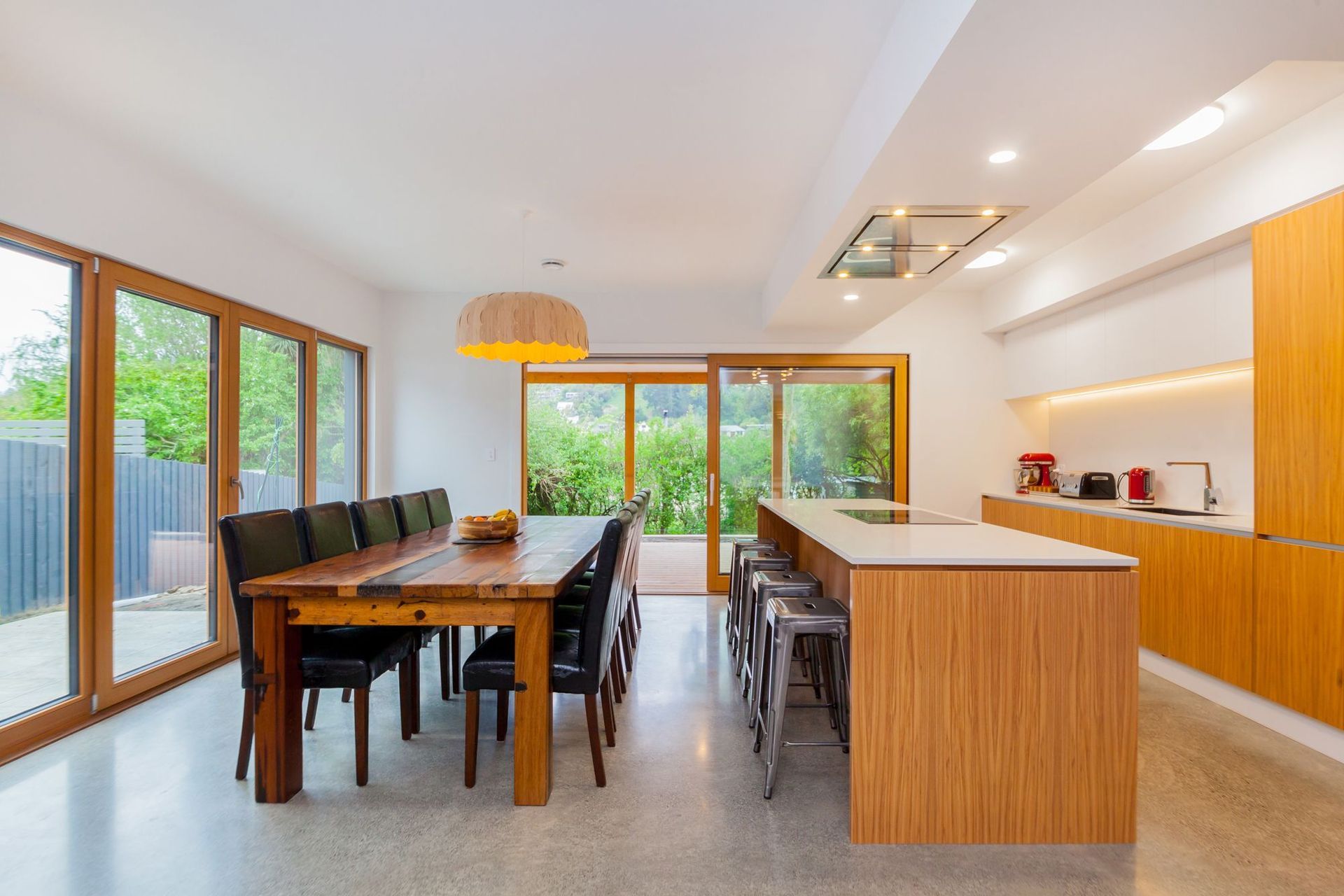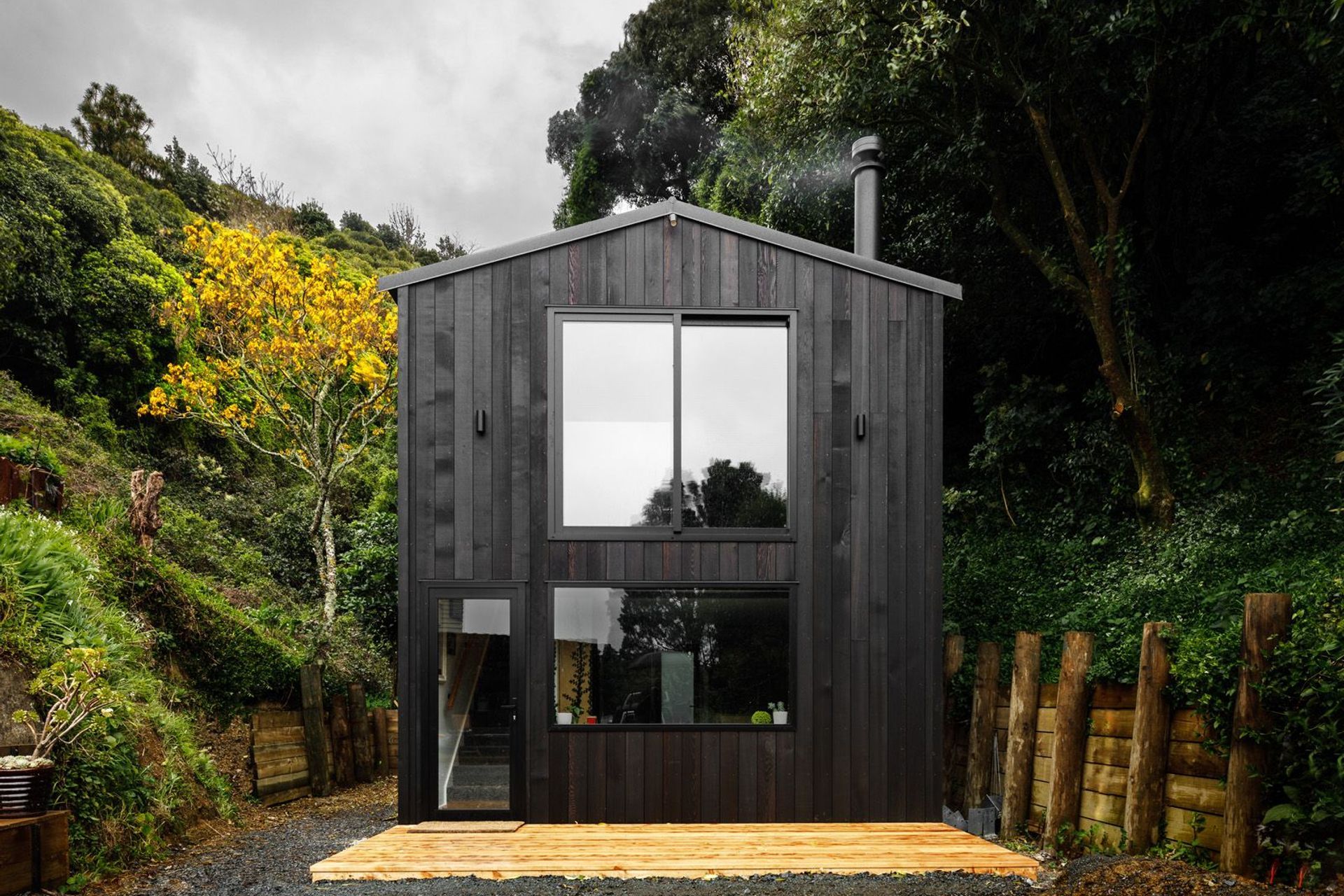Exploring New Zealand's diverse house styles, inside and out
Written by
08 February 2024
•
9 min read

New Zealand is a country that has been largely forged during a time of rapid economic, cultural, social and technological change. This, amongst other things, has led to the presence of many different types of houses across our landscape, each with its own qualities and characteristics. We've covered the main house styles you'll find here, inside and out, speaking to the traits they share and those that stand them apart.
1. Cottages
Cottages are among the earliest house styles used in New Zealand, tracing back to the early European settlement in the 19th century where they were modest yet practical abodes for settlers. These small, often one-story homes featured a straightforward layout and used locally available materials like timber and stone. With traditional pitched roofs and small verandas, they eventually added decorative elements such as fretwork and bay windows, reflecting the adaptation of British architectural influences. Found throughout New Zealand, cottages are especially prevalent in historic settlements and areas with rich colonial history, like Otago, Canterbury, and Wellington.
Many of these cottages have since disappeared but some were maintained and renovated while new build interpretations have also emerged, evidence of the ongoing popularity of the style.
2. Villas
Villas in New Zealand, originate from the late 19th and early 20th centuries and are a reflection of the country's prosperity during the building boom of those times. Heavily influenced by Victorian and Edwardian house styles from Britain, these wooden homes are typically characterised by their one to one and a half storey structure, decorative verandas and symmetrical facades. Inside, you'll find high ceilings, timber floors, bay windows and sometimes stained glass and pressed metal ceilings.
Because of their age, they are predominantly found in the older suburbs across the country like Mt Eden and Grey Lynn in Auckland. They are highly sought after in the real estate market due to their historical charm and many have been renovated beautifully for modern comfort too.
Related article: 10 stunning villa renovations in New Zealand to inspire you
3. Bungalows
Bungalows emerged as a popular architectural style in the early 20th century, reflecting an international trend towards simpler, more functional homes as opposed to villas inspired by the ornate Victorian era. With single-storey layouts, low-pitched roofs and open-plan living areas they were, and still are, the perfect complement to the New Zealand lifestyle, balancing comfort and practicality. Many were constructed with local timbers and nearly all feature wooden weatherboards, exposed rafters and verandas.
Many bungalows can be found in Auckland but are also widespread in other suburbs and cities across the country. They are another style of house that is intrinsically Kiwi, with a touch of historical charm while still being relevant to modern living.
Browse an extensive range of beautifully renovated bungalows on ArchiPro
4. State houses
State houses originated in the 1930s as part of the Labour government's initiative to provide affordable, quality housing to lower-income families. The programme was inspired by the garden city movement which emphasised healthy environments with functional design. The standard design included three bedrooms, a living room, a kitchen and a bathroom. Simple and uniform in appearance, they also featured large windows for sunlight and generous sections for gardens.
State houses were built right across the country but are particularly prevalent in urban areas like Auckland, Wellington and Christchurch. Many of these have since been sold to private owners and renovated very nicely and remain popular to this day as a result.
Related article: 11 weatherboard houses in New Zealand worth celebrating
5. Art Deco
Art Deco houses emerged in the 1920s and 1930s following the tragic 1931 Hawke's Bay earthquake which necessitated a massive rebuilding effort towards a modern and seismic-resistant architectural style. Its distinctive style featuring geometric shapes, streamlined forms, decorative details and textural quality from the use of materials like concrete and stucco has seen it win many admirers over the years. Many Art Deco buildings also incorporate Māori motifs, giving them a strong local twist.
Napier, where a large portion of these buildings were built following the earthquake, is now widely celebrated as the "Art Deco Capital of the World" with the city an architectural symbol of resilience and renewal.
Discover some of the best urban home projects in New Zealand on ArchiPro
6. Mediterranean
Mediterranean style homes, as the name suggests, are inspired by the leisurely lifestyle of countries around the Mediterranean Sea. They emerged in the early to mid-20th century in New Zealand as a symbol of luxury and exoticism. With stucco walls, red clay tile roofs, courtyards and patios, the prominent use of arches and curves and decorative touches like wrought iron railings, their European influence cannot be missed.
They are primarily found in the warmer, coastal regions of the country like Northland, Auckland and the Bay of Plenty. They are not quite as prevalent as other types of houses discussed but do have their place and reflect the country's willingness to embrace different house styles from around the world.
7. Mid-century modern
Mid-century modern houses predominantly appeared from the 1940s through the 1970s, though their influence is still seen in new builds today. Inspired by international modernist principles, these homes feature open floor plans, large windows, geometric forms and minimalist aesthetics. The design incorporates both traditional and innovative materials, like wood, stone, concrete, glass, and steel, highlighting the era's advancements in construction.
Found in urban and suburban areas that saw growth post-World War II, mid-century modern homes catered to the expanding middle class. These houses are celebrated for their practical design, integration with nature, and contribution to modern living standards in New Zealand. Today, they are highly valued for their architectural innovation and timeless appeal.
8. Contemporary
Contemporary homes are those built in more recent years, reflecting a fusion of modernist design principles with the latest in trends, technology, and a focus on sustainability. They are often proudly unique with innovative and sometimes unconventional designs, including dynamic forms and open floor plans. Another hallmark of contemporary New Zealand homes is the seamless indoor-outdoor flow, facilitated by large windows and doors that connect interior spaces with natural surroundings.
Found throughout New Zealand, contemporary houses are particularly prevalent in urban and scenic areas undergoing development or regeneration, such as Auckland, Wellington, and Queenstown.
Related article: 9 exquisite new build homes in New Zealand
9. Townhouses
Townhouses have gained popularity as an urban housing solution, reflecting the country's urban growth and the need for space-efficient living. These multi-story homes are compact in design, often sharing walls with adjacent units in a semi-detached form, maximising living space in densely populated areas. Their architectural styles vary from traditional to contemporary to suit a range of personal preferences, while their modern amenities and energy-efficient systems make them appealing to those seeking comfortable and easy living.
Found in all of our major cities, townhouses tend to be developed in areas with easy access to amenities and public transport. Rapid growth in multi-unit homes, which includes townhouses, shows the strong demand and return on investment for developers of these projects.
See the latest multi-unit dwellings in New Zealand on ArchiPro
10. Terraced houses
Terraced houses in New Zealand were, like many other types of houses here, inspired by British urban housing, emerging in the late 19th and early 20th centuries. They usually include 3 or more homes connected in compact, multi-story layouts to maximise space. Historic terraced houses often boast ornate facades with Victorian or Edwardian architectural details, while modern iterations focus on urban regeneration and contemporary styling.
Predominantly located in the historic cores of cities like Auckland, Wellington, and Dunedin, terraced housing is experiencing a resurgence due to the need for sustainable, space-efficient urban living.
11. Lifestyle blocks
Lifestyle blocks cater to those seeking a balance between rural tranquillity and urban convenience, growing in popularity here since the 1970s. Situated in semi-rural areas within commuting distance of cities, lifestyle blocks allow for a blend of country living with access to urban amenities. A modern farmhouse style is often seen but a wide range of other designs are also pursued.
Owners typically embrace a degree of self-sufficiency, with gardens, orchards, and sometimes livestock, alongside natural features like streams or native bush. Popular regions for lifestyle blocks include areas around major urban centres such as Auckland, Hamilton, and Wellington, appealing for their mix of solitude and connectivity.
12. Passive houses
Passive houses embody a sustainable housing model, focusing on energy efficiency, comfort, and ecological responsibility — a concept that gained traction locally in the 2000s. These homes are distinguished by superior insulation, airtight construction, thermal bridge-free design, and high-performance windows and doors, all aimed at minimising energy consumption. A key feature is the mechanical ventilation with heat recovery (MVHR) system, which ensures fresh air and optimal indoor climate control without significant heat loss.
Passive houses are strategically oriented to maximise solar gain in winter and minimise overheating in summer, often incorporating specific shading solutions. The growing popularity of passive houses reflects New Zealand's increasing commitment to sustainable living and construction practices in the face of global environmental challenges.
Related article: 9 innovative and inspiring passive houses in New Zealand
13. Tiny homes
The tiny house movement in New Zealand, gaining traction in the 2010s, addresses housing affordability, environmental sustainability, and the desire for a minimalist lifestyle. These compact homes, often ranging from 10 to 40 square metres, prioritise efficient use of space and can be built on trailers to offer even greater flexibility.
With many owners pursuing an eco-friendly lifestyle, they often feature solar panels, composting toilets, and rainwater collection systems. Given the constraints of size, they also tend to house innovative storage solutions and multipurpose furniture. Found across New Zealand, from urban backyards to secluded rural areas, tiny homes appeal to a diverse group seeking affordability, simplicity, or a nomadic lifestyle. This movement signifies a cultural shift towards experiences and environmental consciousness over traditional homeownership and material accumulation.
Related article: 7 of the best tiny homes in New Zealand
A diverse range of houses in New Zealand
So, as you can see, there are some fascinating house styles in New Zealand from small traditional cottages to modern marvels, like passive houses, that embody a sustainable housing model with the future in mind. With all the main styles covered, you now have a clear idea of what types of houses will suit your own situation and can confidently start your journey to get there.
Be inspired by the best residential projects in New Zealand on ArchiPro
